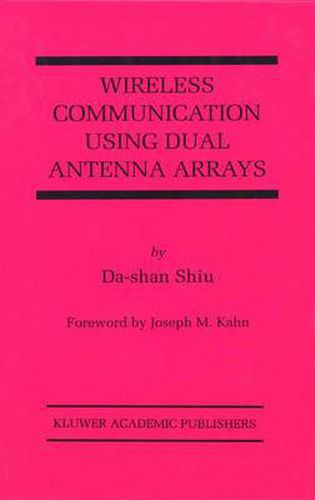Readings Newsletter
Become a Readings Member to make your shopping experience even easier.
Sign in or sign up for free!
You’re not far away from qualifying for FREE standard shipping within Australia
You’ve qualified for FREE standard shipping within Australia
The cart is loading…






This title is printed to order. This book may have been self-published. If so, we cannot guarantee the quality of the content. In the main most books will have gone through the editing process however some may not. We therefore suggest that you be aware of this before ordering this book. If in doubt check either the author or publisher’s details as we are unable to accept any returns unless they are faulty. Please contact us if you have any questions.
At present, the expansion of tetherless communications is a technological trend surpassed perhaps only by the explosive growth of the Internet. Wireless systems are being deployed today mainly for telephony, satisfying the ind- trialized nations’ appetite for talk-on-the-go, and providing much-needed communications infrastructure in developing countries. The desire for wi- less access to the Internet is starting to add fuel to the growth of tetherless communications. Indeed, the synergy of wireless and Internet technologies will lead to a host of exciting new applications, some of which are not yet envisioned. Future-generation wireless systems will achieve capacities much higher than the systems of today by incorporating myriad improvements. These in- vations include transmission in higher-frequency bands, smart antennas , multi-user detection, new forward error-correction techniques, and advanced network resource-allocation techniques. The term smart antenna usually refers to the deployment of multiple antennas at the base-station site, coupled with special processing of the m- tiple received signals. Smart antennas can adaptively reject co-channel int- ference and mitigate multipath fading, and have been identified by many as a promising means to extend base-station coverage, increase system capacity and enhance quality of service.
$9.00 standard shipping within Australia
FREE standard shipping within Australia for orders over $100.00
Express & International shipping calculated at checkout
This title is printed to order. This book may have been self-published. If so, we cannot guarantee the quality of the content. In the main most books will have gone through the editing process however some may not. We therefore suggest that you be aware of this before ordering this book. If in doubt check either the author or publisher’s details as we are unable to accept any returns unless they are faulty. Please contact us if you have any questions.
At present, the expansion of tetherless communications is a technological trend surpassed perhaps only by the explosive growth of the Internet. Wireless systems are being deployed today mainly for telephony, satisfying the ind- trialized nations’ appetite for talk-on-the-go, and providing much-needed communications infrastructure in developing countries. The desire for wi- less access to the Internet is starting to add fuel to the growth of tetherless communications. Indeed, the synergy of wireless and Internet technologies will lead to a host of exciting new applications, some of which are not yet envisioned. Future-generation wireless systems will achieve capacities much higher than the systems of today by incorporating myriad improvements. These in- vations include transmission in higher-frequency bands, smart antennas , multi-user detection, new forward error-correction techniques, and advanced network resource-allocation techniques. The term smart antenna usually refers to the deployment of multiple antennas at the base-station site, coupled with special processing of the m- tiple received signals. Smart antennas can adaptively reject co-channel int- ference and mitigate multipath fading, and have been identified by many as a promising means to extend base-station coverage, increase system capacity and enhance quality of service.